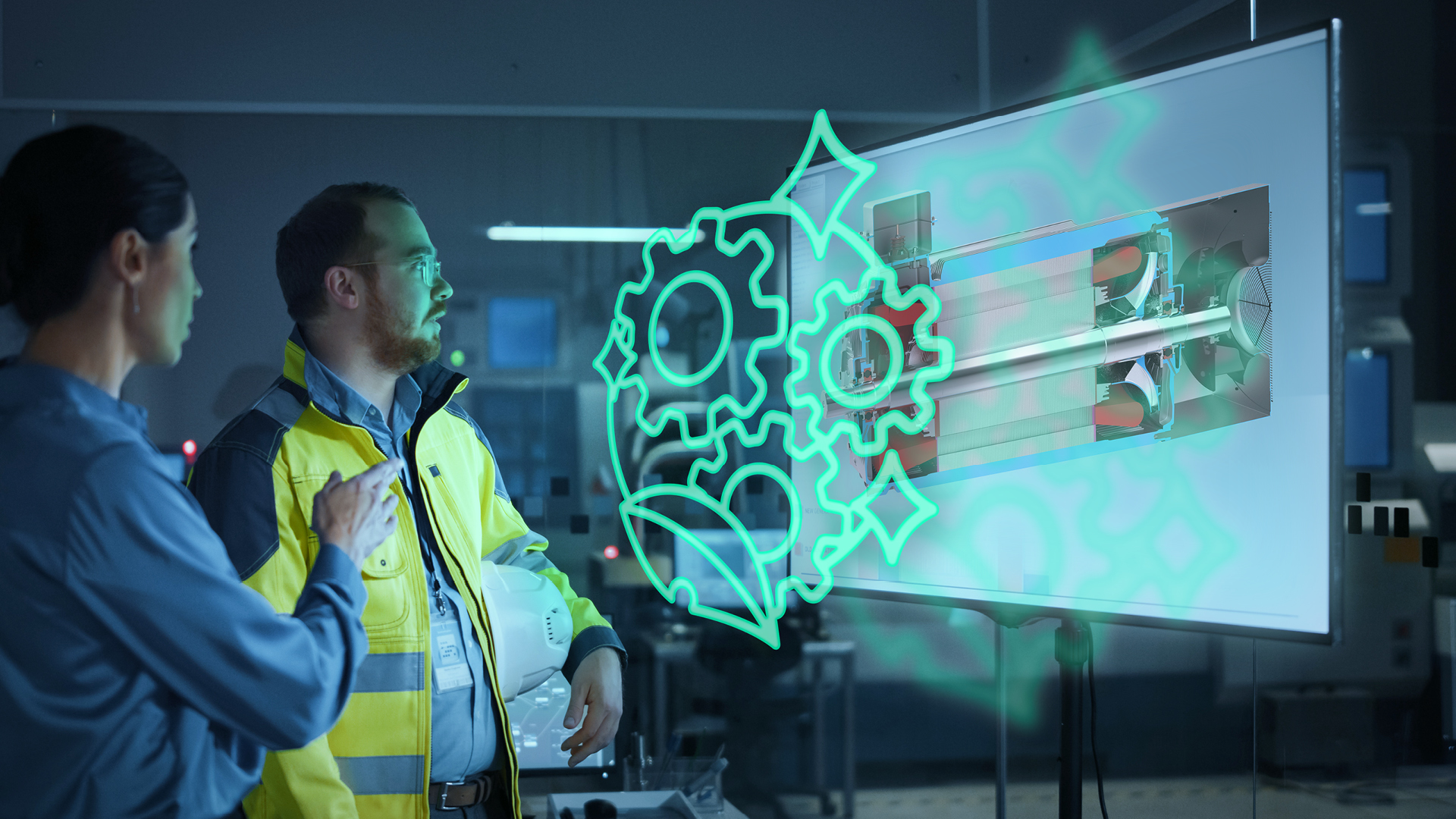Applying AI in industry – Part 4

In previous parts of this series (parts 1, 2 and 3), we’ve examined the benefits of adopting AI into industry. However, moving from the abstract idea of AI to concrete plans and implemented strategies is not a simple task. Part of the long-term challenge for the adoption of AI is the limitations of AI as it is today: needing access to lots of good-quality data, computing power, good internet and large amounts of energy. AI eventually will need to evolve into a reliable, general-purpose technology to be widely usable.
The difference between a fad and a fundamental change
A general-purpose technology has a long-term, deep effect on the economy, such as the printing press, steam engines, electric motors and semiconductors. These transformative technologies typically cause substantial economic changes compared to existing technologies. And, because they are generic and pervasive, they can be used across industries and improved on with complementary technologies or innovations that result in further societal and/or economic change. A wide adoption of a general-purpose technology takes time and effort.
For example, integrating electricity into production processes was a slow transition. Electrification in the United States started in the early 1880s; but 30 years later, only half of manufacturing businesses were connected to the electricity grid. Manufacturers’ reluctance to adapt was the main reason for the slow rate of adoption. However, production systems were later reimagined. Instead of using one large electric motor, small electric motors were invented that could power individual machines more effectively. This simple yet innovative change facilitated maintenance and increased the overall efficiency of production. In its own way, AI and ML will have to undergo a similar renaissance, with both the technology itself and the systems it’s intended to work with designed from the ground up to work optimally with each other.
A slow but worthwhile adoption
Scaling AI from the lab to the factory is a difficult task. According to Siemens ecosystem partner Accenture, 84 percent of business executives believe they need to use AI to achieve their growth objectives. However, 76 percent acknowledge struggling with how to scale AI across their business. Until now, there has been no blueprint for getting past proof of concept into production and scale, a transition many are struggling to make.
The process isn’t one that will happen overnight though, representing both a challenge and a lucrative investment for those who stay the course. Siemens is gradually integrating AI capabilities into our portfolio, across all levels, with the goal of scaling AI-based solutions broadly as well as providing customized solutions. We are working in co-creation with our customers to learn together, supporting them from planning through implementation to monitoring.
Creating a sustainable and more environmentally friendly manufacturing system is a complex and interconnected problem that can be addressed with AI. Detailed data from factories is available from individual machines to entire global value chains spanning multiple companies. This data could be used to improve efficiency and sustainability but analyzing and acting on the data quickly enough is beyond the scope of traditional methods. This is where AI could help: from environmental controls, managing line turnovers and machine optimization to energy use and supply-chain management. Siemens is developing and facilitating industrial-grade AI solutions and services to support people and enhance machines in critical design and production processes. Enabling faster and more confident decisions making with clear productivity gains.
Building a smarter world with AI
AI is rapidly developing to occupy some role in every corner of the world. Although, in some areas like design and manufacturing, adoption may prove more challenging than others. With the unyielding march of time, continued work of experts and constant drive for improvement, AI will take its place in such areas that need to rely on robust, reliable and trustworthy software to realize next generation designs. In years to come, AI will doubtless play a large part in creating the smart, sustainable designs that will be the next step forward in products the world over.
Siemens Digital Industries Software helps organizations of all sizes digitally transform using software, hardware and services from the Siemens Xcelerator business platform. Siemens’ software and the comprehensive digital twin enable companies to optimize their design, engineering and manufacturing processes to turn today’s ideas into the sustainable products of the future. From chips to entire systems, from product to process, across all industries. Siemens Digital Industries Software – Accelerating transformation.


